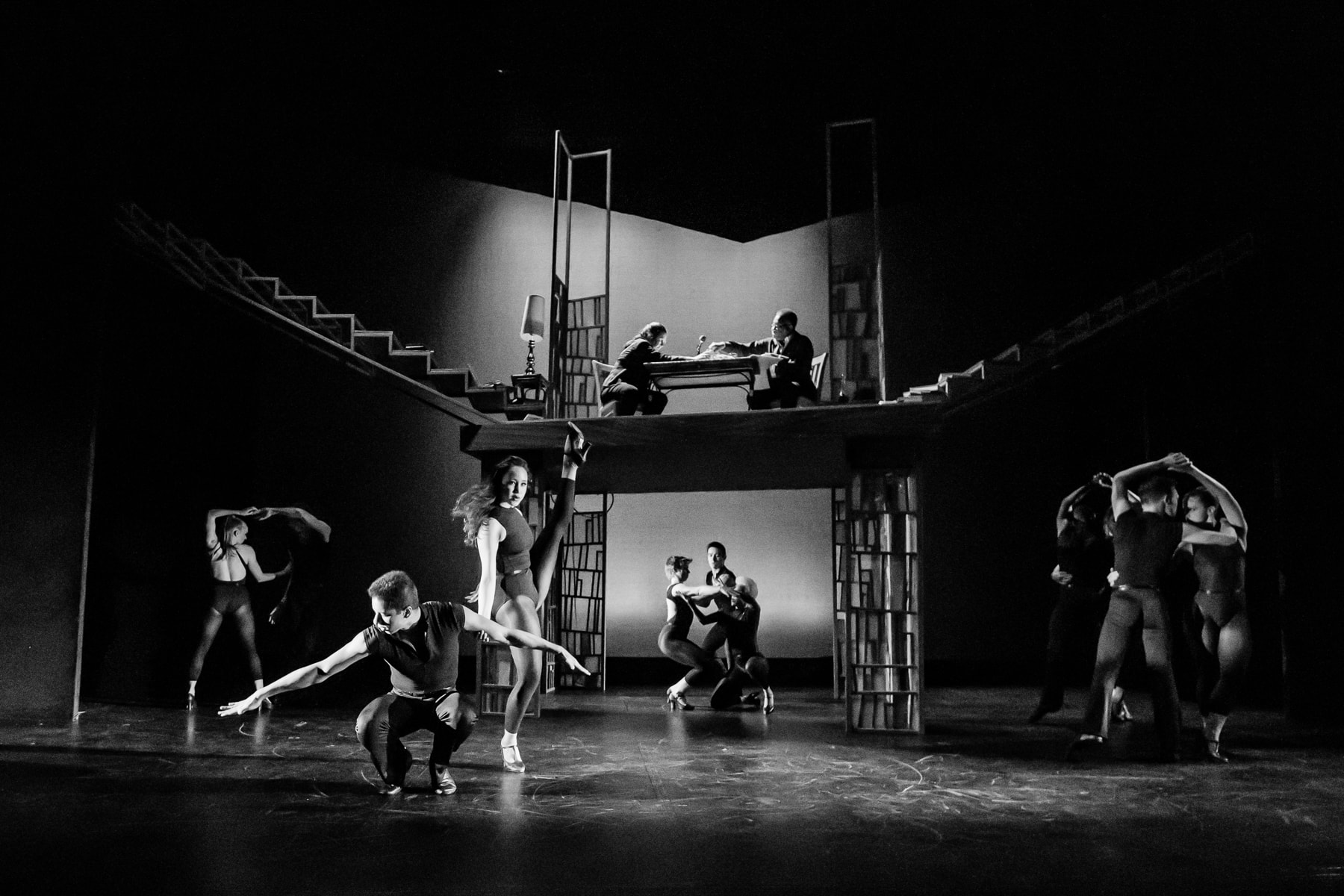The intersection of dance and drama is intentionally harsh in A Rap on Race, the fused performance created by luminaries Anna Deveare Smith and Donald Byrd. Scripted from a 1970 public conversation between the writer James Baldwin and anthropologist Margaret Mead, broken by dance breaks performed by the Spectrum Dance Theater, and set to a lively score from the jazz icon Charles Mingus, the performance is a brutal unraveling of the American experience.

Baldwin and Mead, respectively played by Byrd and Julie Briskman, sit opposite each other on a raised platform; the dancers dance on the stage beneath them. Much of the presentation is wondrous; the lighting and scenic design by Jack Mehler are often as gripping as the tense arguments and powerful movements.
And those movements, performed by the astonishing dancers of the Spectrum Dance Theater, are choreographed in perfect accompaniment to Mingus’s passionate score. When the entire company is on stage, your eyes will strain to catch the nuance of every movement. The dancers are absolutely brilliant, flawlessly balanced, floating when they jump and leap for a second longer than seems humanly possible.
Not that the performance was perfect. There was a drawback, and it was in the actors. Byrd and Briskman deliver their lines well; close your eyes, and the inflection and abruptness of their dialogue mirror an actual conversation. Open your eyes, however, and you can’t help but notice that both actors are reading scripts, and often looking down at the pages more than they are at one another. They make no secret of this, and I wondered if it was intentional. Regardless, without explanation, the reading was a distraction.

Nonetheless, their discussion does match the energy of the dancers and the music. Mead weights her arguments with both historical and empirical evidence. Baldwin, when he’s at his most powerful, informs his argument through story-telling. Their conversation has flashes of some of the most dynamic components of their writing, and you can see how both Baldwin and Mead were able to excite the public through their work.
That said, as popular as Baldwin and Mead were, and as beautiful as this mixed genre performance is at times, it’s arguably not intended for the casual theater fan. The searing discussion between the two intellectuals can turn opaque, and it’s likely that audience members unfamiliar with the writing of Baldwin and Mead will miss much of what historically informs their opinions. Fortunately, there does seem to be enough in the script to deliver some of their most basic sentiments, enough to understand that, as Mead notes, Baldwin veers toward pessimism while she strives for hope.
A Rap on Race does manage the complicated task to which all great performance strives. As their tempers flare, and the dancing turns from heartbreakingly graceful to grimly harsh, and the jazz becomes more and more discordant and more frenetic, we realize that what Baldwin is arguing bears truth, and it’s an uncomfortable, disquieting truth, a movement out of the corner of the eye that slowly focuses.
Their argument is about us.
Their argument is about our place in this country, about what we do in this country, about the spilled blood we share with our countrymen, with both the slaveholders and the slaves. Baldwin sees this, and he understands the cruelty in which men act and have always acted, and thus sees that we are doomed. Mead refuses to accept that fate, even as she realizes that her act of refusal is an acknowledgment that something is indeed impending. Still, she resists. And in the silence between them, we and the dancers wait, ourselves silent. Looking up, waiting for one side to move to the other.
Still.
Running Time: 90 minutes, with no intermission.
Spectrum Dance Theatre’s A Rap on Race plays through Friday, November 16, at George Mason University’s Center for the Arts – 4373 Mason Pond Drive in Fairfax, VA 22030.




